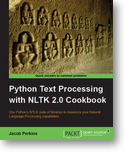How To Model Search Term Data To Classify User Intent & Match Query Expectations by Mark Sprague, courtesy of Searchengineland.com is an interesting piece on analysis of search data to extract user intent.
As interesting as that is, I think it could be used by topic map authors for a slightly different purpose.
What if we were to use search data to classify how users were seeking particular subjects?
That is to mine search data for patterns of subject identification, which really isn’t all that different than deciding what product or what service to market to a user.
As a matter of fact, I suspect that many of the tools used by marketeers could be dual purposed to develop subject identifications for non-marketing information systems.
Such as library catalogs or professional literature searches.
The later being often pay-per-view, maintaining high customer satisfaction means repeat business and work of mouth advertising.
I am sure there is already literature on this sort of mining of search data for subject identifications. If you have a pointer or two, please send them my way.
